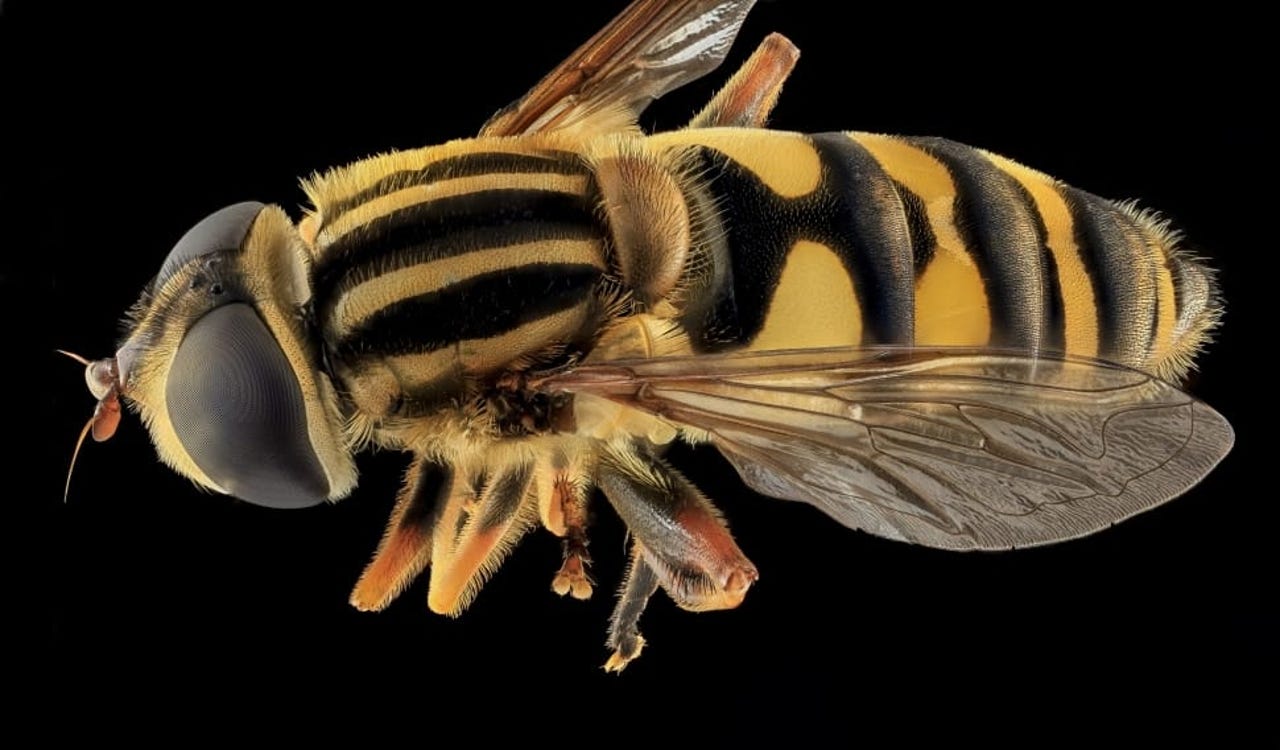
































Striped hover fly.
PeakpxBio-inspired design has been a hallmark of technological advancement, and that's still true in the age of flying robots. The latest proof comes out of Australia, where researchers have mapped the visual systems of hovering insects as a means of detecting the acoustic signatures of drones up to 2.5 miles away.
Anthony Finn, University of South Australia Professor of Autonomous Systems, says that insect vision systems have been mapped for some time now to improve camera-based detections. But applying the same method to acoustic data represents a major innovation.
This lineup of aerial hardware fits a variety of enterprise photography and video use cases.
Read now"Bio-vision processing has been shown to greatly increase the detection range of drones in both visual and infrared data. However, we have now shown we can pick up clear and crisp acoustic signatures of drones, including very small and quiet ones, using an algorithm based on the hover fly's visual system," Finn says.
The potential applications of the research, of course, include military and defense uses. In addition to the University of South Australia and Flinders University, defense company Midspar Systems participated in trials using bio-inspired signal processing techniques. Such techniques, according to the researchers, show up to a 50% better detection rate than existing methods.
The hover fly, which can hover above plants to collect nectar, was chosen because of its superior visual and tracking skills. Dark lit regions are visually very noisy, but insects such as the hover fly can process and capture visual signals with remarkable effectiveness. Mapping this same processing technique to acoustic detection resulted in a substantial increase in detection capabilities, including in noisy environments.
"Unauthorised drones pose distinctive threats to airports, individuals, and military bases," says Finn. "It is therefore becoming ever-more critical for us to be able to detect specific locations of drones at long distances, using techniques that can pick up even the weakest signals. Our trials using the hoverfly-based algorithms show we can now do this."
The researchers specifically looked for patterns (narrowband) and/or general signals (broadband) to pick up drone acoustics at short to medium distances. The new bio-inspired processing technique improved detection ranges by between 30% and 49%.
The findings have been reported in The Journal of the Acoustical Society of America.
 Горячие метки:
Искусственный интеллект
3. Инновации
Горячие метки:
Искусственный интеллект
3. Инновации